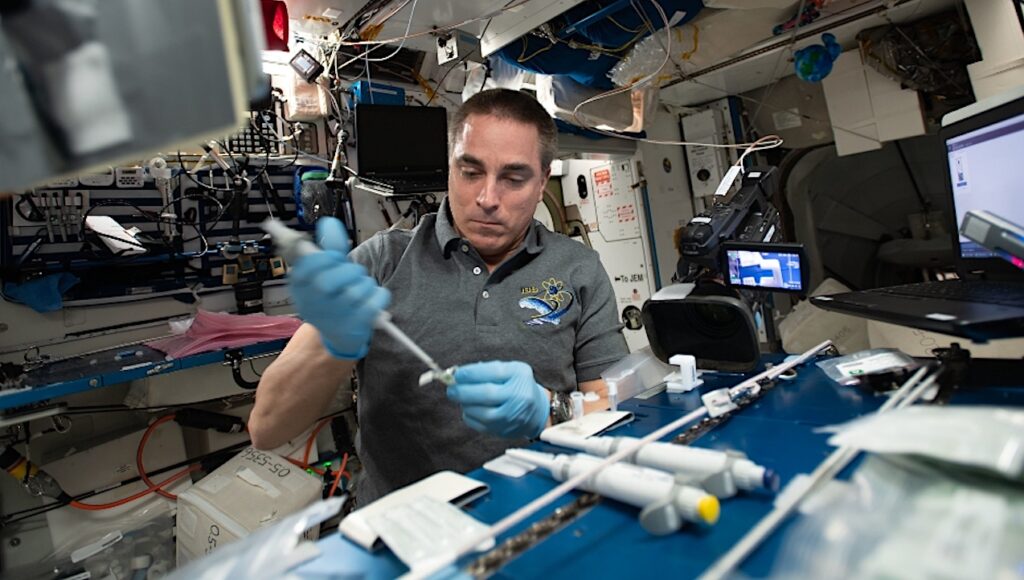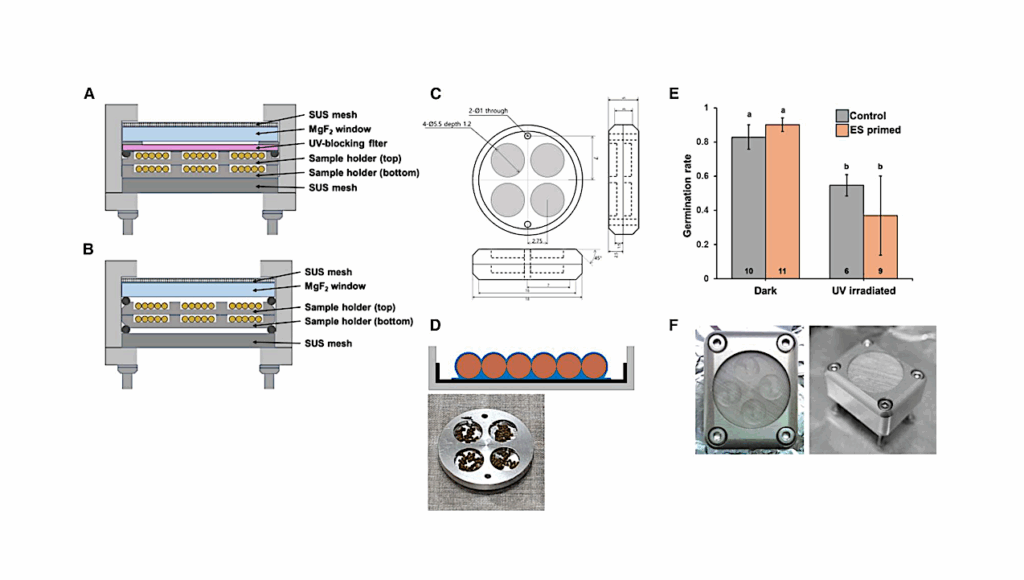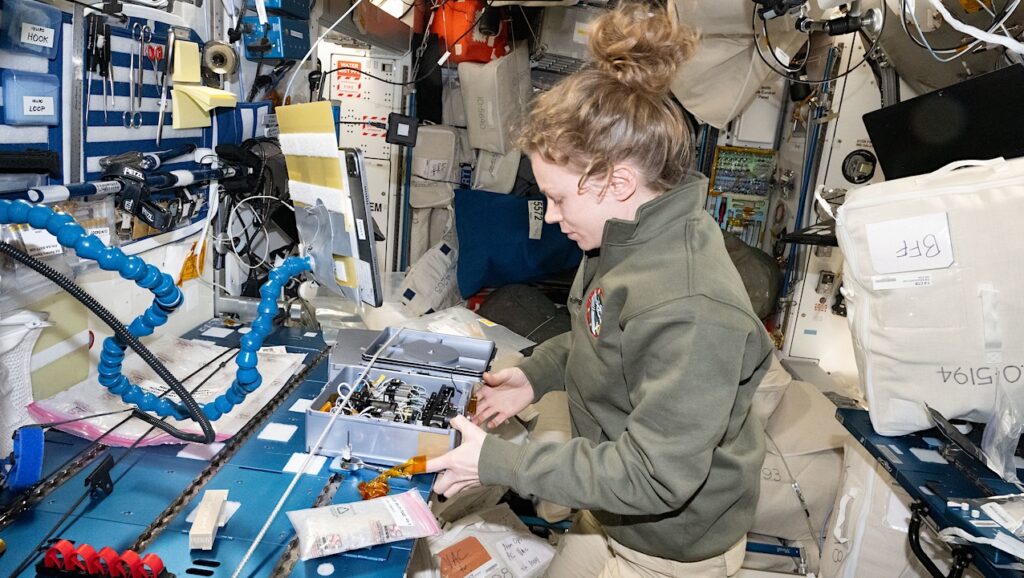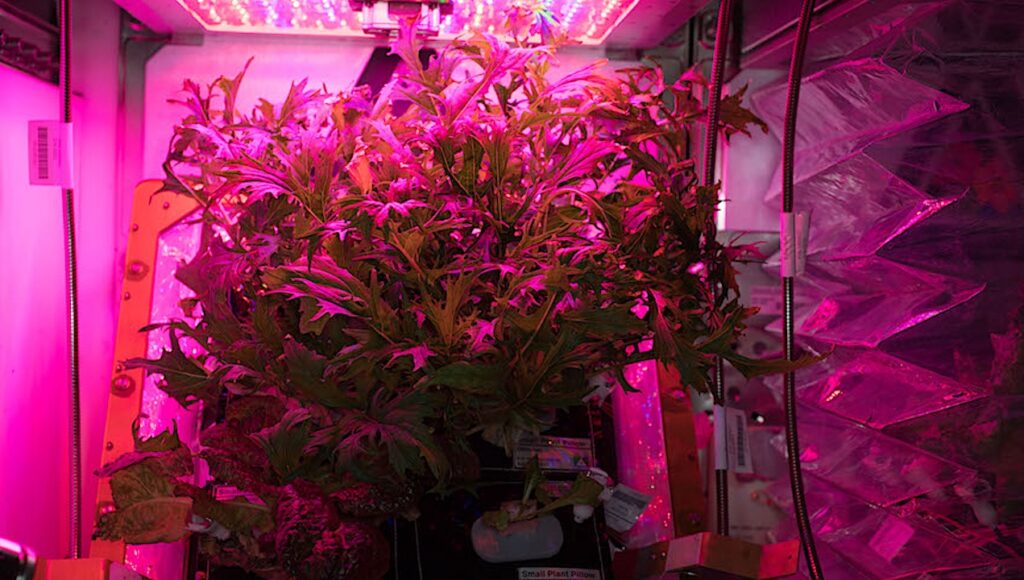A Centimeter-long Bacterium With DNA Compartmentalized In Membrane-bound Organelles

Cells of most bacterial species are around 2 µm in length, with some of the largest specimens reaching 750 µm. Using fluorescence, x-ray, and electron microscopy in conjunction with genome sequencing, we characterized Ca. Thiomargarita magnifica, a bacterium with an average cell length greater than 9,000 µm that is visible to the naked eye.
We found that these cells grow orders of magnitude over theoretical limits for bacterial cell size through unique biology, display unprecedented polyploidy of more than half a million copies of a very large genome, and undergo a dimorphic life cycle with asymmetric segregation of chromosomes in daughter cells. These features, along with compartmentalization of genomic material and protein synthesis in membrane-bound organelles, indicate gain of complexity in the Thiomargarita lineage, and challenge traditional concepts of bacterial cells.
Jean-Marie Volland, Silvina Gonzalez-Rizzo, Olivier Gros, Tomáš Tyml, Natalia Ivanova, Frederik Schulz, Danielle Goudeau, Nathalie H Elisabeth, Nandita Nath, Daniel Udwary, Rex R Malmstrom, Chantal Guidi-Rontani, Susanne Bolte-Kluge, Karen M Davies, Maïtena R Jean, Jean-Louis Mansot, Nigel J Mouncey, Esther Angert, Tanja Woyke, Shailesh V Date
doi: https://doi.org/10.1101/2022.02.16.480423
This article is a preprint and has not been certified by peer review.
https://www.biorxiv.org/content/10.1101/2022.02.16.480423v1
Full article

Morphology and ultrastructure of Ca. Thiomargarita magnifica. A: Size comparison of selected bacterial (green) and eukaryotic (blue) model systems on a log scale. B: Light microscopy montage of the upper half of a Ca. T. magnifica cell, with a broken basal part revealing a tube-like morphology due to the large central vacuole and numerous spherical intracellular sulfur granules (a tardigrade is shown for scale). C: 5 3D rendering of segmented cells from HXT (Movies S1, S2 and S6) and CLSM (Movie S3), putatively at various stages of the developmental cycle. From left to right 3D rendered cells are cell D, B, F, G, and D (Table S2). Note smallest stage correspond to cell D terminal segment and was added to the left for visualization purposes. D: CLSM observation of cell K after fluorescent labeling of membranes with FM 1-43x showing the continuity of the cell from the basal pole to the first complete constriction at the apical end. E: 10 TEM montage of the apical constriction of a cell, with the cytoplasm constrained to the periphery. F: Higher magnification of the area marked in E, with sulfur granules and pepins at various stages of development. G: Higher magnification of the area marked in E showing two pepins (arrowheads). S: sulfur granule; V: vacuole.








